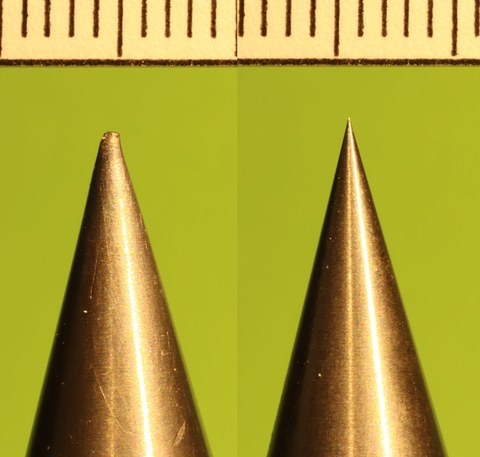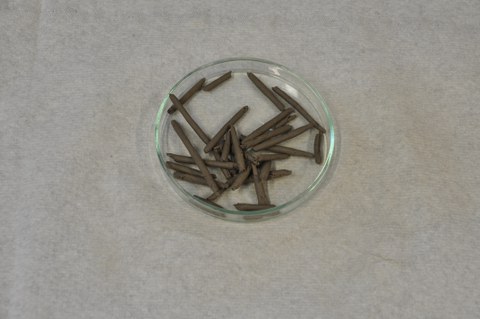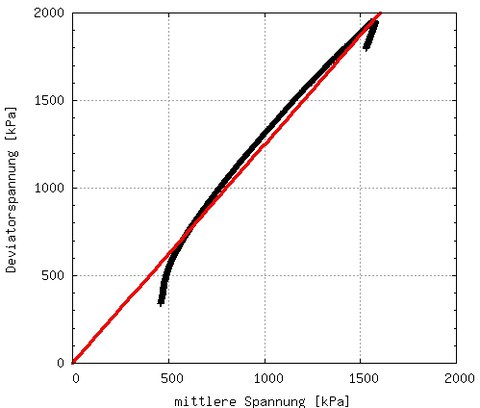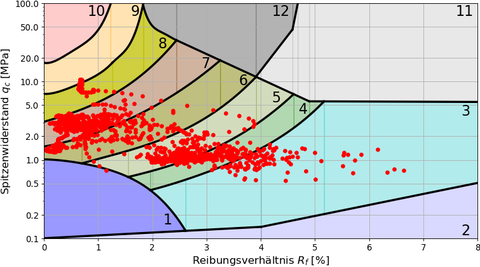Current Topics at the Institute of Geotechnical Engineering
Table of contents
Working Group of Applied Geology
Chair of Soil Mechanics and Foundation Engineering
For details of this topic please contact Mr. Uhlig.
Keywords
laboratory tests, literature, fall cone test

Research Fellow
NameDr.-Ing. Markus Uhlig
Coordinator Laboratory; Courses: BIW4-10, BIW3-04
Send encrypted email via the SecureMail portal (for TUD external users only).
Chair of Soil Mechanics and Foundation Engineering
Visiting address:
Beyer-Bau (BEY), NEU 104 or in the laboratory George-Bähr-Str. 1
01069 Dresden
For details of this topic please contact Mr. Uhlig.
Keywords
literature, laboratory testing, microscopy

Research Fellow
NameDr.-Ing. Markus Uhlig
Coordinator Laboratory; Courses: BIW4-10, BIW3-04
Send encrypted email via the SecureMail portal (for TUD external users only).
Chair of Soil Mechanics and Foundation Engineering
Visiting address:
Beyer-Bau (BEY), NEU 104 or in the laboratory George-Bähr-Str. 1
01069 Dresden
In laboratory testing an isotropic consolidated triaxial test is common. But in situ mostly a anisotropic state can be found.
In this work triaxial tests should be performed with anisotropic and isotropc consolidation. The aim is to determine the influence of anisotopic consolidation.
Furthermore a program for controlling the triaxal apparatus can be developed.
The work can be done as master thesis or project work. For the implantation of the programme to control the apparatus the knowledge of programming is required.
Keywords
Literature, triaixal testing, programming
Keywords
Literature, triaixal testing, programming

Research Fellow
NameDr.-Ing. Markus Uhlig
Coordinator Laboratory; Courses: BIW4-10, BIW3-04
Send encrypted email via the SecureMail portal (for TUD external users only).
Chair of Soil Mechanics and Foundation Engineering
Visiting address:
Beyer-Bau (BEY), NEU 104 or in the laboratory George-Bähr-Str. 1
01069 Dresden
Soil behavior is governed by the arrangement of grains and their contacts, i.e., the soil’s contact fabric. This fabric develops through natural processes such as deposition, compaction, and loading, and can also be influenced during laboratory sample preparation.
This study employs the Discrete Element Method (DEM), which models soil as an assembly of individual grains interacting through contact forces, rather than as a continuous material. DEM enables the generation of samples with distinct initial contact fabrics and the analysis of their response under various loadings. At the micro-scale, it allows investigation of contact orientations and force distributions, revealing how the contact fabric controls direction-dependent soil behaviour.
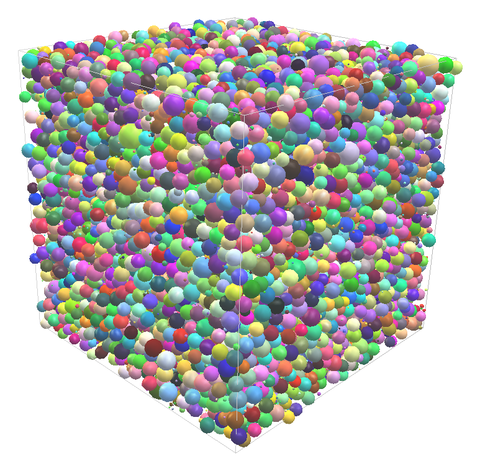
Example DEM sample of spherical grains
 © IMG_Karslioglu.jpg
© IMG_Karslioglu.jpg
Research Fellow
NameM. SC. Z. Metehan Karslioglu
Research, Course: BIWE-14, BIWO-07, BIW4-62
Send encrypted email via the SecureMail portal (for TUD external users only).
Chair of Soil Mechanics and Foundation Engineering
Visiting address:
Beyer-Bau (BEY), S 15 George-Bähr-Str. 1
01069 Dresden
As part of an extensive research project, the Institute has examined numerous soil samples and collected valuable data on the properties and densities of different soils.
The work will focus on using this data to develop a model using neural networks. The tasks include the preparation and structuring of the available data, the construction and training of a suitable model as well as the analysis and interpretation of the results obtained.
The work offers the opportunity to combine modern methods of artificial intelligence with practical questions from geotechnics.
The work can be carried out as a master’s thesis or, in a shortened form (focusing on one subtask), as a project-work. Previous programming knowledge is recommended.
 © IMG_Karslioglu.jpg
© IMG_Karslioglu.jpg
Research Fellow
NameM. SC. Z. Metehan Karslioglu
Research, Course: BIWE-14, BIWO-07, BIW4-62
Send encrypted email via the SecureMail portal (for TUD external users only).
Chair of Soil Mechanics and Foundation Engineering
Visiting address:
Beyer-Bau (BEY), S 15 George-Bähr-Str. 1
01069 Dresden
The mechanical behavior of soils is significantly influenced by factors such as grain size distribution, relative density, effective stress, degree of saturation, soil structure, preloading, and drainage conditions. Under drained conditions, shear loading typically leads to compaction in loosely packed soils, whereas densely packed or preloaded soils tend to exhibit dilation. The intensity of these shear-induced volume changes strongly depends on the stress level.
Under undrained conditions – for example, during rapid shear loading and low permeability – pore water pressure may accumulate, as volumetric deformation is restricted. This leads to a reduction in effective stress, which in turn decreases the stiffness and shear strength of the soil. In extreme cases, this can result in soil liquefaction – a phenomenon that plays a critical role in safety considerations, especially under cyclic loading of coarse-grained soils.
To investigate these processes, undrained shear tests are commonly conducted in the laboratory. The aim of this thesis is to numerically model the buildup of pore water pressure under cyclic loading. Advanced constitutive models will be used to realistically represent the nonlinear behavior of the soil. The simulations will be based on the boundary conditions of an undrained simple shear test.
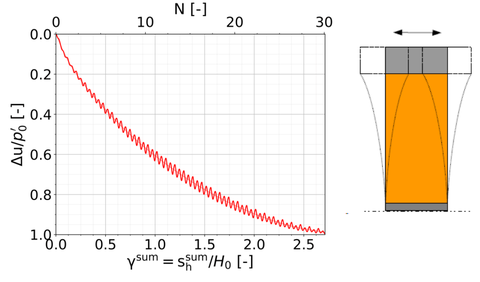
Pore water pressure build-up under cyclic loading
 © IMG_Karslioglu.jpg
© IMG_Karslioglu.jpg
Research Fellow
NameM. SC. Z. Metehan Karslioglu
Research, Course: BIWE-14, BIWO-07, BIW4-62
Send encrypted email via the SecureMail portal (for TUD external users only).
Chair of Soil Mechanics and Foundation Engineering
Visiting address:
Beyer-Bau (BEY), S 15 George-Bähr-Str. 1
01069 Dresden
An overconsolidated soil was exposed to a higher vertical pressure in the past, than the actual ones. This preconsolidation may have different reasons, e.g. Excavation of overlying layers of soil, geologic history or else. For samples from site, this preconsolidation pressure is sometimes unknown.
The aim of this thesis is to determine the preconsolidation pressure of undisturbed samples with different methods. Therefore artificial samples should be consolidated and released. With the help of different experimental methods the former consolidation pressure should be determined.
As a new approach it should be checked, if the preconsolidation pressure can be determined due to a change in shear wave velocity of the material. Therefore experiments with bender-elements in a trixial cell should be conducted.

Research Fellow
NameDr.-Ing. Markus Uhlig
Coordinator Laboratory; Courses: BIW4-10, BIW3-04
Send encrypted email via the SecureMail portal (for TUD external users only).
Chair of Soil Mechanics and Foundation Engineering
Visiting address:
Beyer-Bau (BEY), NEU 104 or in the laboratory George-Bähr-Str. 1
01069 Dresden
The mechanical behaviour of mixed-grained soils is determined by the ratio of fine and coarse grains. For a low fines content, the load-bearing grain structure is completey consisted of coarse grains whereas a high fines content results in the coarse grains to "swim" inside the fine grains. Consequently, depending on the composition of the binary mixture, the mechanical behaviour is either governed by the coarse or the fine grains.
in order to further analyse the influence of the fines content, mechanical tests are performed using binary mixtures of fine and coarse sand in different ratios. Furthermore, the influence of the fine sand content on the density is investigated. The following laboratory tests are performed within the scope of this work:
- density tests
- oedometer tests
- shear tests
 © Institut für Geotechnik
© Institut für Geotechnik
Research assistant
NameDipl.-Ing. Selma Schmidt
Research, Teaching: BIW2-03, BIWE-04
Send encrypted email via the SecureMail portal (for TUD external users only).
Chair of Soil Mechanics and Foundation Engineering
Visiting address:
Beyer-Bau (BEY), S 09 George-Bähr-Str. 1
01069 Dresden
The behaviour of a mixed-grained soil is strongly dependent on its composition. Usually, the fine grains are assumed to have no influence on the soil behaviour below a certain fines content, which is typically quite high. But is this assumption really true?
To answer this question, the influence of the fines content on the fabric of the soil is analysed. For this purpose, binary mixtures of coarse and fine sand are prepared at different ratios. Because the fabric of a soil significantly influences its behaviour, the influence of the fine sand content on the soil behaviour can be derived from this analysis.
The preparation of the soil specimens is especially challenging in this regard. While the soil fabric should be as realistic as possible, it also sould not change during the investigation. In situ, cohesive forces act on the sand grains due to the pore water. Unfortunately, when using water for the specimen preparation, the water can evaporate during the investigation and the fabric can change.
The goal of this work is the development of a suitable procedure for the preparation of binary specimens. The influence of the preparation method on the soil fabric is determined with the help of microscopy. The analysis focuses on specimens prepared with:
- synthetic resins
- oil
- sugar solutions
 © Institut für Geotechnik
© Institut für Geotechnik
Research assistant
NameDipl.-Ing. Selma Schmidt
Research, Teaching: BIW2-03, BIWE-04
Send encrypted email via the SecureMail portal (for TUD external users only).
Chair of Soil Mechanics and Foundation Engineering
Visiting address:
Beyer-Bau (BEY), S 09 George-Bähr-Str. 1
01069 Dresden
The Cone penetration test is commonly used indirect field test to determine geotechnical values. Moreover the soil type can be determined. Hereby a lot of method are available in the literature.
In this work some of this methods should be implemented in a routine. Furthermore empirical methods to determine the layer-effects could be implemented.
Additionally a method to compare the soil types from CPT and the classification results on samples could be developed.
This work can be done within a master thesis or in shorter from in a project work. it is a precondition the have knowledge about programming. For this work there existing some ideas how the soil type methods and to build the comparison tool can be developed.
Keywords
Literature, determination of cone penetration tests, programming

Research Fellow
NameDr.-Ing. Markus Uhlig
Coordinator Laboratory; Courses: BIW4-10, BIW3-04
Send encrypted email via the SecureMail portal (for TUD external users only).
Chair of Soil Mechanics and Foundation Engineering
Visiting address:
Beyer-Bau (BEY), NEU 104 or in the laboratory George-Bähr-Str. 1
01069 Dresden
At the Institute of Geotechnical Engineering, the behaviour of a mixed-grain soil is currently being intensively studied. When the grain size distribution of this soil was determined, it was found to be subject to scattering.
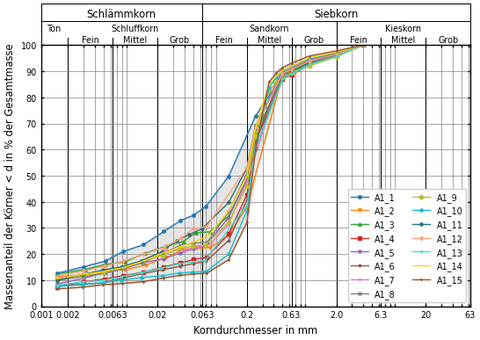
Grain size distribution band of the mixed-grained soil
The work will therefore investigate how the grain size distribution of the soil influences the mechanical behaviour and hence the material parameters of the hypoplastic material model (without intergranular strain). For this purpose oedometer and triaxial tests will be carried out in the laboratory on self-made mixtures representing both the upper and lower limits of the grain size distribution. The results will then be used to calibrate the material parameters of the hypoplastic material model.
The aim of the work should be to work out the uncertainty in the material parameters due to the grain size distribution and to give a range for each model parameter.
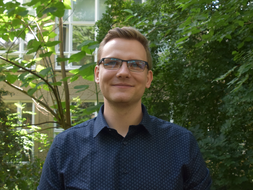 © Institut für Geotechnik
© Institut für Geotechnik
Wissenschaftlicher Mitarbeiter
NameDipl.-Ing. Sebastian Ullmann
Forschung, Modul BIW2-03
Send encrypted email via the SecureMail portal (for TUD external users only).
Chair of Soil Mechanics and Foundation Engineering
Visiting address:
Beyer-Bau (BEY), S 15 George-Bähr-Str. 1
01069 Dresden
The Institute of Geotechnical Engineering focuses on the development and verification of material models for soils. To this end, a large-scale model test is currently being constructed and instrumented with numerous sensors. The aim is to be able to investigate soil behaviour not only in typical small-scale laboratory tests, but also under in-situ conditions with natural influences such as temperature changes, changes in the degree of soil saturation, but also due to cyclic traffic loads.
To accompany the construction of the large-scale test, the thesis will develop a numerical model of the large-scale test, which can then be used to investigate the behaviour of advanced material models.
The simulations will be carried out using the software numgeo, which has been developed specifically for geotechnical applications.
 © Institut für Geotechnik
© Institut für Geotechnik
Wissenschaftlicher Mitarbeiter
NameDipl.-Ing. Sebastian Ullmann
Forschung, Modul BIW2-03
Send encrypted email via the SecureMail portal (for TUD external users only).
Chair of Soil Mechanics and Foundation Engineering
Visiting address:
Beyer-Bau (BEY), S 15 George-Bähr-Str. 1
01069 Dresden

